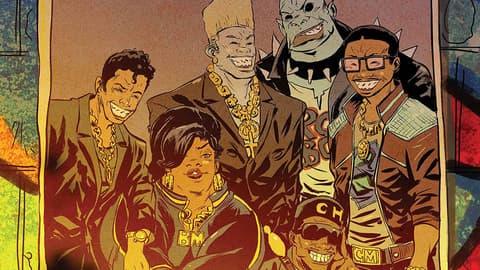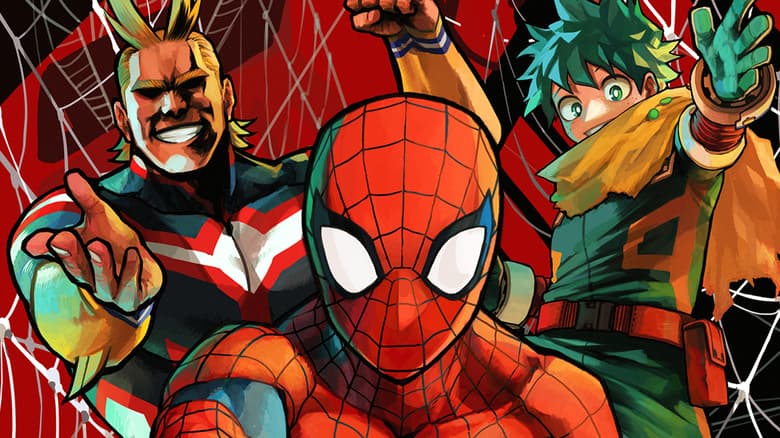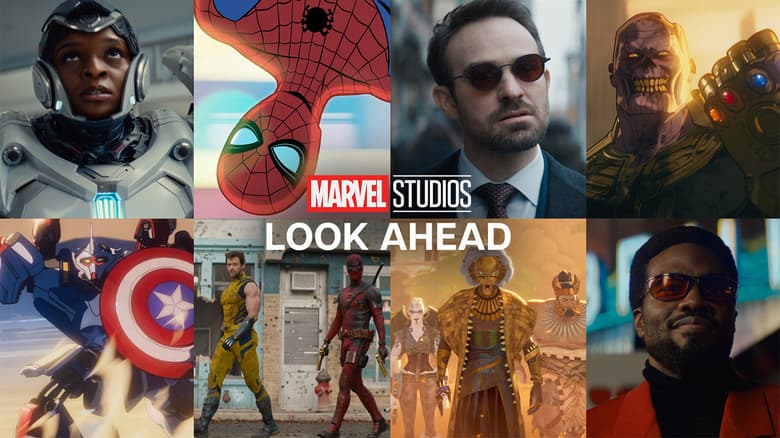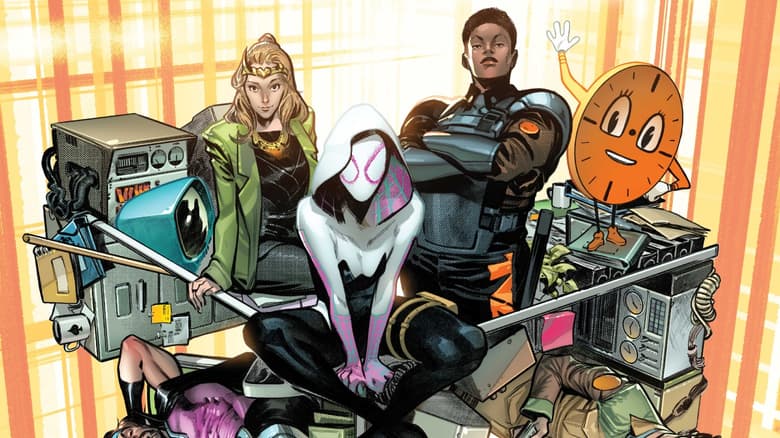Power Man & Iron Fist: Working on the Fang Gang
The villainous group flashes their shiny teeth as Harlem continues to burn!

We all make friends in different ways. Some of us play the same sports or like the same teams. Others meet compatriots because we love movies or TV or comics. More still get pals from living in proximity to others.
Or, you can hang out with the people who have fangs, just like you.
That’s how the Fang Gang did met, years ago, but it turned out not to be a binding connection as you might expect.
Now David Walker and Sanford Greene—and Alex Wilder—have brought the Gang back together in the pages of POWER MAN & IRON FIST. Walker took some time out filing other people’s teeth to talk to us about the Gang’s rough past and possibly worse future.
Marvel.com: In POWER MAN & IRON FIST #10, you introduced the Fang Gang and in issue #11, you began to deepen our sense of their shared past. Judging by the previews for #12, it appears you will digger even further into their younger years. What can you preview about the Gang’s earlier days?
David Walker: The Fang Gang started as kind of a joke between myself and a couple other people when I was like, “Hey has anyone ever noticed this [the unusual proliferation of 70’s era African American villains with sharp pointed teeth] and then I pointed it out and everyone was like, “Wow, no, I never noticed,” and then I knew I had to make something out of it.
Part of it was taking a lot of these characters—Tombstone being the one exception—being primarily old Luke Cage villains and giving them a little bit of a backstory that was fun and pokes fun at some of the tropes we saw in the 70’s.
It was also to set up the modern day story which is that there is this group of people who have this rich past, this rich history together and not all of it is good. So what we will see as the “Harlem Burns” story plays out [is] that these people continue to betray each other and stab each other in the back and love each other and be at each other’s side. They kind of are a family. What we are seeing is the very last days of the Fang Gang.
What’s the worst thing that could happen to these people who had been together, who had tried to start a gang and it never happened? That is kind of sad and pathetic in itself but there are these lingering feelings and lingering emotions and that comes through and to a head by the time the story’s over.
Marvel.com: How does the dynamics of the Fang Gang, especially with their first ugly end, play into the dynamics and the forming of the new Pride?
David Walker: That’s a really interesting question. Part of that is the new Pride is all Alex’s thing. So part of what we are going to see as the story moves forward is what the arrogance of youth can do. Alex represents that arrogance and the hubris of youth and [that] think they know everything; coming up with a plan and not necessarily seeing the bigger picture.
Then you have the Fang Gang where every single one of them—with the exception of Tombstone—has never fully amounted to what they thought they could be. Now they are pinning their hopes and dreams on this young kid and thinking, “This could be our opportunity.” At least that’s what some of them are thinking. Others recognize that Alex has potential and maybe they can use Alex to their own ends.
We see that theme of there is no honor among thieves and what is going to happen to these guys as they try to form a new gang. Can you [put] most of the old band back together and still be able to play the way you used to while you still hate each other?
Marvel.com: To touch on the past and present dynamic, who are they today, what are they like, versus who they were back in the day in their youth when the gang was still together? How have they changed over the years?
David Walker: That’s a really good question too because a lot of these characters have only had a minimal number of appearances. Like Black Mariah has now had more appearances in our book—the one that Sanford and I are doing—than all her other previous appearances combined in the entire history of the Marvel Universe.
For Black Mariah she was the one who may have been the smartest in the room or at least the most ambitious one in the room but no one ever took her seriously in part because she was a woman. She’s still trying to prove herself, trying to prove she can do anything the boys can do and she can do it better.
Piranha Jones is the guy who wasn’t the smartest one in the room, wasn’t the toughest one in the room, didn’t have the best ideas in the room, but he found a niche for himself. That niche was running his own little gang across the river in the Bronx and allowing that to give him a false sense of “maybe I can do more, maybe I can be more.”
Cottonmouth was always…I always intended him to be the one member of the gang who was really kind of dangerous. Was smart, not necessarily the smartest, but he’d always go to bat. He’d kill whoever needed to be killed. But he also keeps going to prison. He’s definitely not meant to be the leader but he’s an enforcer.
Then, when [“Marvel’s Luke Cage” on Netflix] happened, I had already started to develop Cottonmouth and doing stuff with him. I was going back and forth between having either him or Piranha be the sort of sad sack of the bunch. Then I saw the show, I said, “No, let it be Cottonmouth,” because that character was just so great.

Power Man & Iron Fist #12 cover by Sanford Greene
Tombstone, obviously, we all kind of know who he is and what his pedigree is. I’m writing it from the standpoint that he was going to be a crime boss no matter what.
Mr. Fish is just there for fun because Sanford just really wanted to draw Mr. Fish and he had fangs. I’m playing a little with the relationship between him and Tombstone.
Then there’s Cockroach Hamilton as well.
There’s this implication that Piranha and Cottonmouth went off and did their own thing together for a little. And Mr. Fish went solo. Cockroach has a thing for Mariah and so he’s willing to follow her to the ends of the Earth. Is she even aware of his feelings for her?
So all of that leads to that past that I want to create gives us that dramatic pay off as the story wraps up.
There’s a sense of closure for all these characters over the next few issues. We get to see what happens to them and see what the interplay is between each other.
Marvel.com: You mentioned Sanford so to discuss his work on the book, in term of the Fang Gang’s fashion in the past, was that collaborative? Did he come up with the designs on his own? How did their look come to be?
David Walker: He came up with the designs. I had written and said, “Everybody should look really dated. They don’t necessarily have to look like they come from the same era. We can play around with it. We want this sort of ‘out of style out of time’ feel to it.”
The other thing is these introductory sequences in [issues] #10 and #11 are being told by Cockroach Hamilton so there is this implication that these are his memories. How accurate is what’s being said here? DidTombstone really have a high top fade? Did Piranha really have a jheri curl?
I wrote these notes initially; these are some ideas. Give one of them a high top fade, give one of them a jheri curl or a process. Someone should be wearing sweats. One should be dressed like Big Daddy Kane during his “I Go to Work” era. Sanford and I have enough of a shorthand that we both get it; we have the same references. I’m like, “Whatever man, I know you are going to deliver something funny and interesting.” And that was it.
Marvel.com: I love Tombstone in particular. The idea of him as having this “hip hop emerging on the national scene b-boy” style with that haircut is just so great to me for some reason.
David Walker: I just said, let’s just show them in these all different ways so we can have fun with it.
Everybody who goes to work for Marvel wants to—or should want to—introduce something new and different to the universe. You don’t always get to do it but you should want to. So I had this notion of “yeah, all these guys knew each other at some point” because that’s the only way they make sense, the only explanation for why they all have fangs.
Surprisingly no one said, “Don’t do it.”
Marvel.com: With Black Cat in the book, how does she play into or change the dynamics between these characters who have such history with each other?
David Walker: Black Cat was difficult to work into the story but it was suggested that we have someone from outside the [Fang Gang] circle that was still part of the crime scene in Marvel.
What we do is bring her in and she’s sort of paired up with who I see as sort of being the weakest member of this former gang and that’s Piranha. He’s the person that’s most easily manipulated. So Black Cat is working with Piranha because that’s just sort of what she does. She finds the person who can help her meet her ends, her goals and manipulate them. We’ll see where that leads.
It might not lead to somewhere well.
Follow the fate of the Fang Gang in POWER MAN & IRON FIST #11, out now, and issue #12, coming January 11 from David Walker and Sanford Greene!




